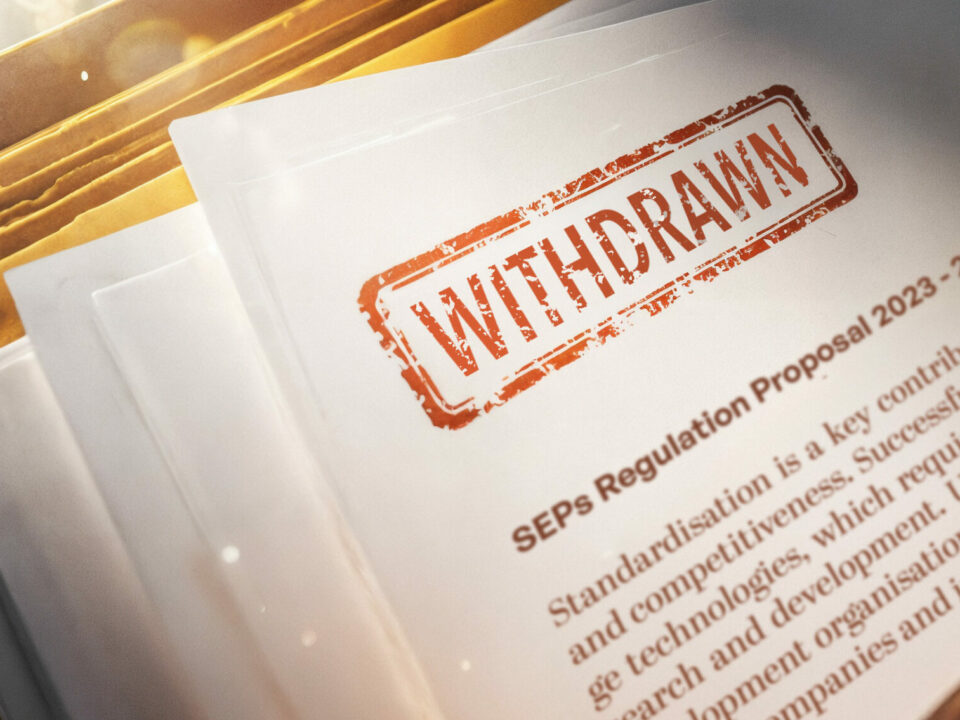Specifications for the 5G cellular network released
‘Next generation’ wireless network to enable a radical increase in up and download speeds, and new applications that require ‘real-time’ response
[Brussels, 18 June, 2018] The first full technical specification for the 5G wireless open standards was released late last week by the standards body 3GPP[1] meeting. This major milestone details the ‘next generation’ cellular technologies needed to build the core 5G cellular network and base stations.
5G New Radio (NR) is the first standalone element of 5G to be released. It will not rely on 4G radio infrastructure. When implemented, these technologies will provide the tailored ‘backbone’ wireless infrastructure needed to support upcoming 5G-enabled hardware and services – including autonomous vehicles and the Internet of Things (IoT) and many other applications and services we cannot predict yet, but which will also benefit from the ‘real-time’[2] response that 5G NR offers.
Francisco Mingorance, Executive Secretary of IP Europe (the coalition of R&D intensive European businesses), said: “Cellular is the only type of wireless standard that provides true ubiquitous mobility, and the essential technology to make a phone mobile. It is difficult to overstate the importance of 5G NR; it is the essential first step in the creation of 5G systems that will connect new exciting products and services such autonomous vehicles and the Internet of Things.”
European companies such as Ericsson, Nokia, and Orange, who have been at the forefront of creating each previous generation of open standards (from 2G – 4G), are once again leading the development of the 5G standards.
Francisco Mingorance continued: “5G has the potential to be one of the most iconic, transformative technologies of the 21st Century. The starting-gun of the 5G era has been fired. For once in Europe, we should celebrate the fact that we have some of the most innovative companies and greatest engineering minds working in the field of wireless technology, and they have made a massive contribution to delivering the next generation 5G cellular standards.”
“Despite Europe’s current leadership position in 5G, we cannot afford to be complacent. The competitive pressures around 5G are fierce, and increasing, and not every country or company is going to play fair. In Europe, we need to recognise that our mobile technology companies are a strategic asset and crucial to fulfil our 5G and Digital Single Market ambitions. European policy makers and regulators will have to ensure that our innovators can compete and succeed on the merits of their technology and the value it brings to the market.”
To date, the development of 5G – a monumental feat of collaborative engineering – has taken a decade and involved over 240 organisations, with major contribution from a dozen. Thousands of engineers from the world’s leading centres of wireless technology innovation – including large and small businesses, universities and research institutes – have worked collectively to solve the massive technical challenges set by 5G market requirements. Last year alone, the 19 working groups of 3GPP’s 5G project clocked-up 250 years-worth of highly skilled engineers’ time on the developing the standard[3].
The 5G NR standards is a set of more than 60 lengthy and very complex technical specifications documents that will provide manufacturers with details on how to include cutting edge technological innovations into their products. This will enable:
- Mass device communication: the capacity for large numbers of devices to communicate simultaneously with each other.
- Spectrum bands above 24Ghz: (which will enable fiber-like connectivity, at lower costs) will be available for mobile broadband for the first time, promising extreme data speeds and capacity within short range.
- Spectrum sharing: 5G NR will make more efficient use of the world’s limited spectrum assets, enhancing services for existing users, and creating capacity for the millions – or even billions – of new devices and users that are expected to rely on the 5G network.
For consumers, this translates into:
- Very fast speeds: whereas top 4G speeds allowed download a feature-length movie in HD in minutes, with 5G it takes you a few seconds to download any HD movie.
- Real-time response: 5G minimises delays in network response, which enables entirely new services and applications. Online gaming is an obvious first example, but applications go far beyond this (e.g. remote surgery, where it is vital the hardware responds in real time to the input; or autonomous vehicles, where braking a few milliseconds after a signal is registered can make all the difference).
- IoT networks: 5G’s ability to support 100 times more connections than 4G will lead to a rapid increase in the number of home, office, and industrial IoT networks and devices.
- Affordable next generation services that improve connectivity: IP Europe members contribute to projects such as RIFE (aRchitecture for an Internet For Everybody) – part of EU Horizon 2020 – or 5G-Crosshaul (a project by the 5G Private-Public Partnership) to develop affordable next-gen services that improve connectivity and capabilities for all.
More information on the standardisation process:
During technical standardisation work at the 3GPP, different solutions were submitted for inclusion in the new 5G standards, and the best new technologies were selected for inclusion by consensus. By bringing their latest cutting-edge technologies into the highly competitive standardisation process, R&D intensive companies – like Ericsson, Nokia and Orange – enable a single best-in-class wireless standard to be developed and made accessible to all technology manufacturers globally, in return for committing to negotiate a licence fee under Fair, Reasonable And Non-Discriminatory (FRAND) obligations. This process of technological development and distribution enables global device interoperability and high performance which benefit everyone in society, from consumers to industries.
About IP Europe
IP Europe brings together R&D intensive European companies and research institutes committed to innovation: from SMEs to global enterprises and non-profit research entities operating in multiple industry sectors. They all share a common goal: to maintain, at all policy levels, strong patent protection for innovators and to support fair, reasonable and non-discriminatory standardisation policies that preserve fair compensation for innovators. IP Europe and partner companies are working together to produce a Code of Conduct that outlines fair and efficient technology licensing best practices for Standard Essential Patents.
-END-
For more information, please contact
Laura Lichinski
laural@europa-insights.com
+32 493298882
[1] The 3rd Generation Partnership Project (3GPP) is a collaborative project aimed at developing globally acceptable standards/specifications for mobile systems. The 3GPP caters to a large majority of the telecommunications networks in the world.
[2] In terms of latency – how long the network takes to respond to a request – we expect a huge jump from 4G’s 45 milliseconds down to 1 millisecond for 5G. Applications sensitive to response times, such as autonomous vehicles or, further down the line, remote surgery, will greatly benefit from this leap.
[3] This excludes time spent by hundreds of the world’s leading engineers on internal R&D by the contributing companies.



